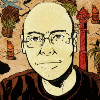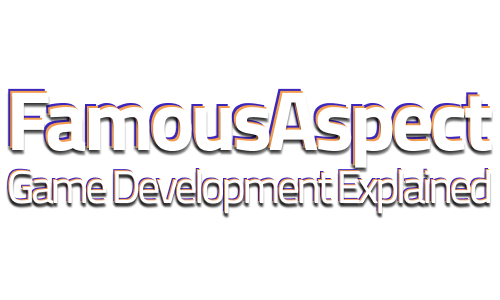 The following are excerpts from a conversation with Greg Kasavin, Creative Director at Supergiant Games, makers of indie blockbuster Bastion and the upcoming Transistor. Before helping found Supergiant Games, Greg worked as a producer at EA on Command & Conquer and served as the editor-in-chief for Gamespot. This conversation originally took place in May of 2012.
The following are excerpts from a conversation with Greg Kasavin, Creative Director at Supergiant Games, makers of indie blockbuster Bastion and the upcoming Transistor. Before helping found Supergiant Games, Greg worked as a producer at EA on Command & Conquer and served as the editor-in-chief for Gamespot. This conversation originally took place in May of 2012.
EL: What is game design?
GK: Game design is the art of making games, put broadly. It’s coming up with the systems and the inputs that will lead to an interactive experience with a player that hopefully creates some kind of feeling. So, yeah, it’s an open-ended question. I suppose that’s why you ask, more to kind of stump us, right?
EL: [laughs]
GK: It can obviously mean any number of different things, depending on the type of game you’re talking about. I think it was always interesting to me that, at Electronic Arts, there’s a job family in quotes called the “game designer” who, on the totem pole, is usually below the producer. But this is a guy who in theory is making all the content for the game. He’s what makes the game exist in a way, though, really that’s the engineer.
EL: At the onset of Bastion, what did you and the team focus on in terms of what the player would experience?
GK: Bastion didn’t start with any focus, there was no sort of grand design at the beginning. There were really just those types of high-level ideas in terms of what we wanted the end result to feel like. That’s kind of where our conversation started from and one of the things we were talking about from the very beginning after quitting EA.
The idea early on was that we wanted to make a game that was more than just fun. That’s the expression I always use, because fun, I think, fun is fine. It’s what most games aspire to be, but I think fun is very fleeting. Because, as soon as you stop having it, you kind of forget about it.
It’s a very immediate feeling that goes away. It’s a little bit like pain. You can’t remember how bad something hurt, really. And I think fun is the opposite end of that spectrum.
We did want to make a game where players could feel something about it at the end and then basically decide; be given an opportunity through the game to respond to their experience. That’s alluding to the way that we structured the ending of the game, where you get to make some choices at the end.
Secondly, we wanted to deliver story in a way that was only possible through the medium of games, because otherwise if I just wanted to write a story I could write a book or a screenplay or something. But we wanted to make a game specifically in something that felt like it could only be a game, not like we had aspirations of making some other thing.
EL: How did that desire to make something that is more than fun, how does that high-level guiding concept turn into some of the concrete moments in Bastion? How do you design, those hallmark moments?
GK: I think when I’m working on a story that has a theme that is something that feels personal to me, then I’m automatically going to approach it from a certain perspective, and I don’t know that I could write a story just about fun.
EL: [laughs]
GK: I’m just not wired that way. I think the appeal of stories is that, stories exist because people want to understand, people want to rationalize and stories are a neat way of taking things that are unrelated and making them feel complete and whole. It’s a chain of events, one thing led to another and now there is a germ of knowledge about the world that you gain out of the end of this.
One of the moments that I think stands out to people in Bastion, is the part where you discover the singer for the first time and you hear her song. It was important in establishing that character as this contrast to the narrator, so we build it up so that, by this point in the game, you assume that there’s going to be no other. You’re so used to hearing this guy’s voice by then that, hopefully, the last thing you expect is to hear a totally different and polar opposite type of voice.
EL: That song was I think the most memorable moment in games last year that I can think of…
GK: Thank you.
EL: Were there any narrative devices that you really wanted to express in the game, but could not manifest in a way that worked?
GK: I’m happy to say we like all the stuff that we wanted to do with the story we did. We built the game serially, meaning we built the beginning first and the ending last. The idea for the ending was there pretty much all along.
There’s a lot of stuff that we tried because all the writing happened on a level to level basis, so the writing was difficult all the way through. We treated every level uniquely and tried to do new things with.
So there were certain narrative concepts for certain levels that we tried and threw out, where there’s like a hundred-plus slides of narration that we wrote, recorded, implemented and then were like, no, we’re going to do this differently. But I don’t regret any of that, because we did, we tried it and we found a better thing to do.
But the intent was still the same. It was just around making sure that the performance and the writing were as clear as possible and conveying what we intended. Then again, I feel incredibly grateful to have been able to work in an environment where that was possible.
As a writer, the best you can hope for is having time to iterate until it gets to where your sort of mental idea of what the person will experience is. It’s all communication, and if they are taking away from it what you intend for them to take away from it, that’s perfect.
Usually things, especially game development in big companies, you don’t really get second chances. You have to get it right the first time and you’ll even get really good feedback about something that you could tweak to make it way better, but it might already be too late.
EL: To go a little bit broader, what excites you most about game design?
GK: What excites me most about game design is just the incredible potential of having these interactive experiences and what they can do. Both physically and emotionally.
I’ve been playing games for as long as I can remember. I’ve just always seen like an unlimited amount of potential in that. It’s always sort of funny to me that the debates, you know, the debates rage on about, should games have authored, narrative content at all? Or is the player’s story the one that really matters. Should games impose a story on the player?
I’ve just never seen it as being that confrontational. My favorite games do both. They find a way, or some of my favorite games do anyway. I love competitive games that have no story to them whatsoever. Or those games where you do get a story out of your multiplayer matches.
EL: On the flip side, what do you find most frustrating about the process of game design?
GK: The most frustrating process of game design is, I think, is also kind of the best part, which is trying to make something good. It’s the frustration of doing your best and having that quality still not be enough. And then thinking, well, what is it going to take? How do I make this, I’m not happy with this, what’s it going to take to make it even better?
I think game design ultimately is a form of communication. Because games are meant to be played and, if you make a game and the player takes away something wildly different from what it was you intended, then… I don’t know.
Maybe for certain games, that’s okay. But I think you’re trying to communicate something with most games. At least with how I think about them.
EL: It sounds to me like being in this small studio afforded you the opportunity to make something that was truly great. Do you think you could have made this game in a different environment?
GK: I don’t think we could have made this game in a different environment at all. We actually tried to, not this game, but before we quit EA, we were trying to get an action RPG off the ground. We really, really tried. It just didn’t work. So the forces of antagonism were too great.
The team sizes have evolved, which is that they ballooned up into hundreds of people where you have games made by 500 or even 1,000 people on the AAA projects.
But it also sort of imploded, in a lot of cases, and turned into these much smaller teams. And I really love that that now, that those things exist side by side. I think they all have their merits.
It’s sort of come full circle to how it was in the 80s and 90s, where you could have small teams actually create pretty good and, in many cases, superior games. There are so many people playing games out there that you can make a game for a niche and that niche can be huge. So it can make fiscal sense to make that weird, specific game, that only 50,000 people are going to play.
But to those 50,000 people, it’s going to be the best game those people ever played. And that’s an awesome feeling, as opposed to I think how it felt a few years ago where AAA games had the challenge of making a game that ten million people are all going to love, and I don’t know how you really tackle that.
READ MORE
Richard Hilleman, Chief Creative Director at EA
Jenova Chen, Chief Creative Officer at thatgamecompany
Richard Vorodi, Senior Designer at Crytek
